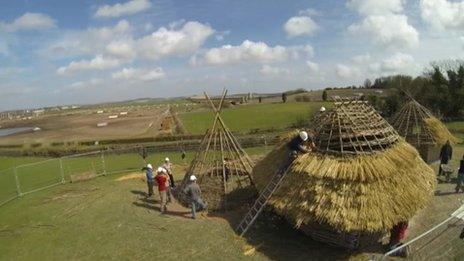Old Sarum archaeologists reveal plan of medieval city
- Published
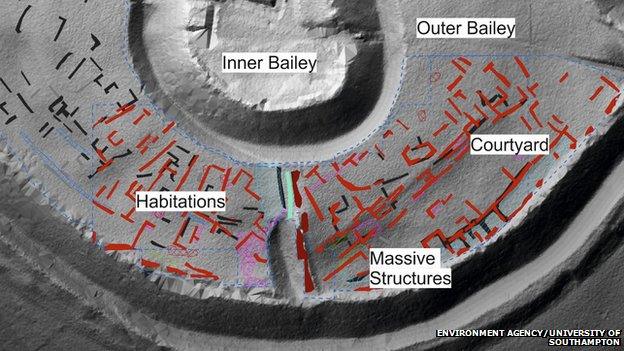
The inner and outer baileys of the Old Sarum Iron Age fort were surveyed
A detailed plan of a medieval city has been produced by experts without any digging at the site.
The latest scanning techniques were used to uncover a network of buildings at the 11th Century Old Sarum near Salisbury, Wiltshire.
The results include a series of large structures, possibly defences, with open areas of ground behind possibly for mustering resources or people.
Old Sarum was the original site of Salisbury, which is two miles away.
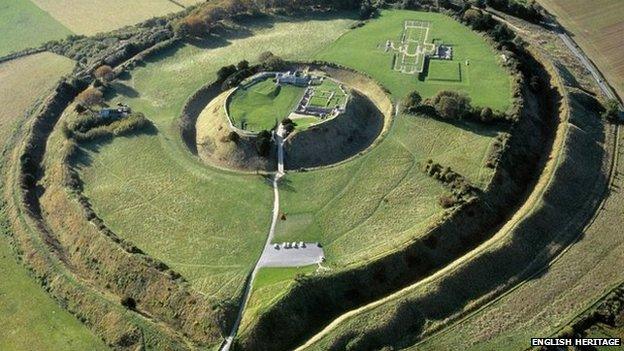
Old Sarum lies two miles north of the modern-day city of Salisbury, Wiltshire
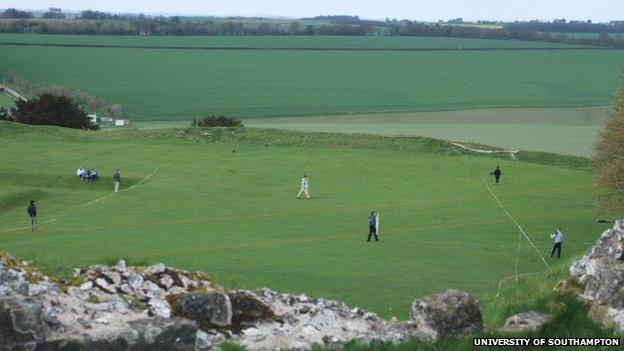
Students from the University of Southampton spent the summer on site

WHAT IS OLD SARUM?
It was the location of the original Salisbury
It combines a royal castle and cathedral within an Iron Age fortification
Its ecclesiastical power waned during the 1220s when a new cathedral was built in New Sarum (present day Salisbury)
Henry VIII ended the castle's use in 1514
The Romans, Normans and Saxons have all left their mark there
For 150 years it was a major centre of government but its influence declined during the 13th Century as New Sarum flourished
Source: English Heritage, external

It was originally an Iron Age fort, established around 400 BC, and occupied by the Romans after the conquest of Britain in AD 43.
This latest survey of the site was carried out by the University of Southampton and concentrated on the inner and outer baileys of what would have been the fort.
Other structures plotted on the plan include residential areas and industrial features such as kilns or furnaces.
The university's director of archaeological prospection services, Kristian Strutt, said: "Archaeologists and historians have known for centuries that there was a medieval city at Old Sarum, but until now there has been no proper plan of the site.
"Our survey shows where individual buildings are located and from this we can piece together a detailed picture of the urban plan within the city walls."
He said the reinforcing of the entire outer bailey during the Middle Ages represented a "substantial urban centre" and more non-intrusive work was needed to build on this knowledge.
The techniques used to survey the land included magnetometry, earth resistance, ground penetrating radar and electric resistivity tomography, which uses electrodes to probe underground.
These new approaches are "exciting and innovative", according to Neil Holbrook from Cotswold Archaeology, and "could be applied pretty much anywhere".
"The survey adds a whole new dimension to our understanding of a site which we thought we knew. In fact, there is so much more to be found out," he added.
"The plan shows for the first time just how much other activity there was around the castle and cathedral which have long been known. It sets those monuments within the context of a bustling, vibrant town established shortly after the Norman conquest."
- Published6 July 2013
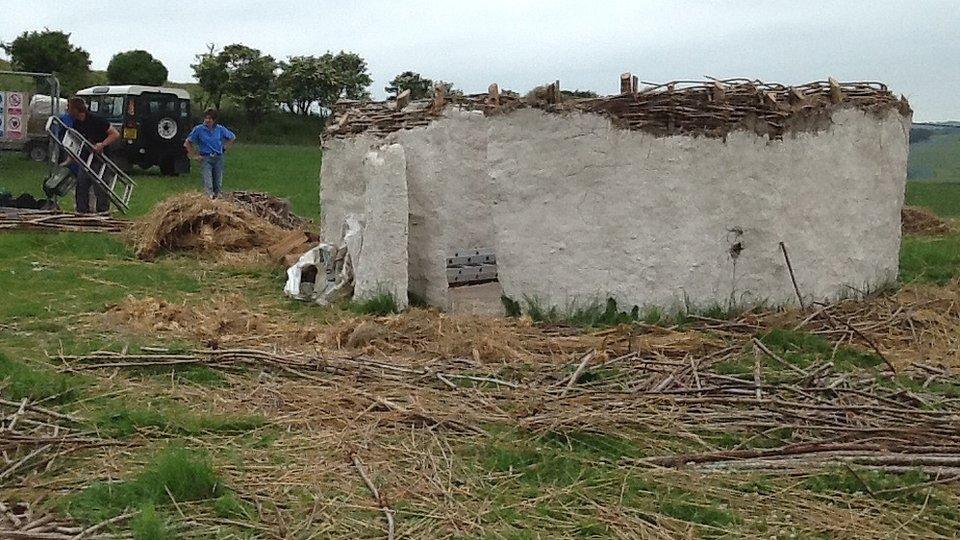
- Published6 May 2013
